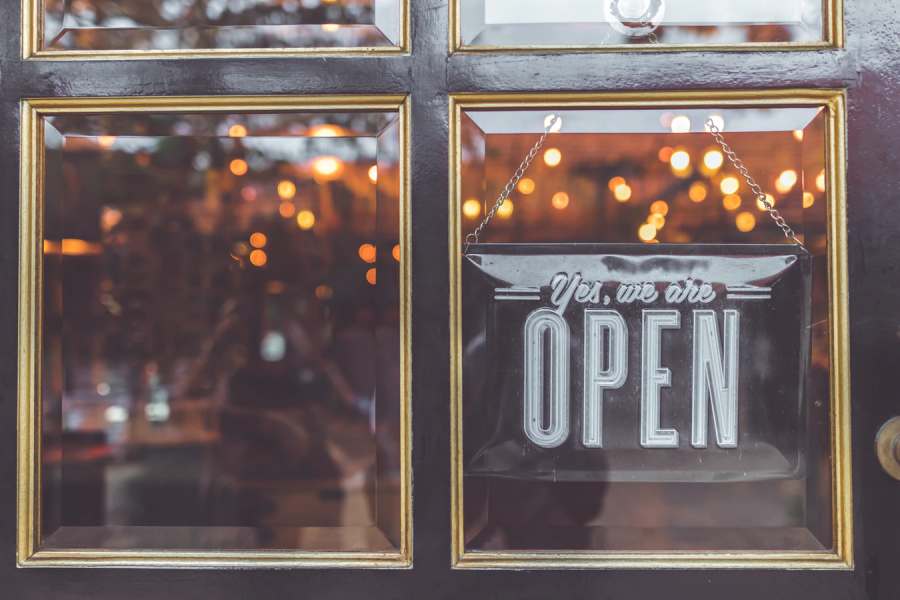OP-ED: A Comeback Story: What to expect from Biden’s post-pandemic economy
May 25, 2021
Across contextual narratives, few are as compelling as the comeback story. From Team USA’s 1980 “Miracle on Ice” over the Soviet Union to Steve Jobs’s return to the Apple board in 1977, stories of dramatic redemption provide hope that struggles can be overcome. The American working class anxiously awaits such an arch for the nation’s economy, and, if history may serve as a dependable reference, they are right to expect a bounce back. However, rebuilding the economy exactly as it existed prior to the pandemic would indicate a larger failure. In any compelling comeback arch, the hero returns from their downfall stronger, smarter, better prepared by the experiences gained from the struggle. As the U.S. emerges from the pandemic, the decision to grow from the mistakes we have made lies in the hands of the new Biden administration. Despite cautionary objections from economic conservatives, now is the time to address where we went wrong instead of operating under the pretense that the recession never happened.
One hundred years ago, America dealt with a scenario closely resembling its current dilemma. The nation had just experienced a global pandemic, the Spanish Flu, which infected nearly 500 million people and killed 50 million. At the start of the twenties, a desire to celebrate the return to normalcy captivated the country. Under Republican President Warren G. Harding, the United States witnessed major technological innovations in cars, telephones, and electricity. America’s total wealth doubled as mass consumerism drove the greatest economic boom in the history of the nation.
Given the proper infrastructural support, the 2020s will see similar developments as lessons from the pandemic shape the cultural zeitgeist. Lockdown measures have forced schools, businesses, and families to evolve in creative ways. Remote work is likely to remain in varying capacities, and homeowners will have new geographic variables to consider. While the specific consequences of pandemic evolution are yet to be realized, new entrepreneurial and investment opportunities are sure to come.
Signs of an upswing are beginning to appear in first-quarter economic growth figures. Economists are forecasting between 7 and 8 percent economic growth for the quarter. The vaccine and its rapid distribution are the most direct causes of the responding private sector, but the economy is also receiving major contributions from the federal government.
The CARES Act kept the economy afloat during the tumultuous summer months when we were on the brink of collapse, and the second stimulus package followed in the last days of the Trump presidency to provide further support. Those economic relief efforts have been expanded by the new Biden administration, whose opening move was to pass the $1.9 trillion American Relief Plan injecting the economy with vitalizing federal money. This month, the Biden administration announced that it would double down on government investment with a $2.3 trillion infrastructure package.
The infrastructure plan would address major inequalities that were exposed during the pandemic. Under the category titled “human infrastructure,” it would invest in childcare, paid leave, education, and target systemic racism in work opportunities. The plan also allocates $40 billion for public housing which would reverse a decades-long trend of divestment. Much of the existing public housing was built during New Deal development projects toward the end of the Great Depression, and residents regularly live in shocking conditions exposed to mold or lead. Over 10,000 public housing apartments are lost every year because they are no longer inhabitable. Even after accounting for moderate partisan log-rolling, these initiatives would provide the necessary bottom-up support to bring about more equitable recoveries than in past attempts.
Following the 2008 financial crisis, employment numbers seemed, from a surface level, to recover well. However, the numbers did not accurately describe the vulnerable gig economy, which was rapidly expanding, as workers took temporary or flexible jobs. The pandemic quickly exposed the fragility of the economy as most of these workers faced layoffs after the early signs of a downturn. While high-income workers transitioned to working from home, poorer people struggled to survive. The danger of a K-shaped economy where financial elites experience economic growth while the lower- and middle-class plummet loomed heavily. Larger corporations saw shares skyrocket while barbershops and bars often failed to meet their payrolls. The challenges faced by the working class indicated possible long-term detriments to employment that would cause the recovery to lag.
A central issue in labor demand shifts is the translatability of skills. If a certain sector shifts, workers will need to retrain to take on other jobs. However, the skills needed to make that change are rarely accessible. The president’s proposals could go a long way in retooling workers’ skills and establishing trends to benefit future generations from currently underprivileged households.
Banking on fiscal policies to revive the economy is a gamble though. Several conservative economists warn about potential inflation and rapid interest rate adjustments which often lead to recessions. If a recession occurs then many of the people these policies hope to uplift will be the first to feel its effects. On the other side, successful implementation leads the nation toward a more cohesive economic landscape and creates a roadmap for further investments in equitable opportunities.
In the United States, 97 million people have been vaccinated against COVID-19 and nearly three million vaccine doses are being delivered every day. Daily new cases are also down 75 percent from their peak on Jan. 8, 2021. The trajectory is positive with the consensus being that the most challenging economic obstacles of the pandemic have passed. The onus of the public is slowly shifting to the future, and deciding how that future’s economic landscape will look is in line to dominate the political discourse in the months to come. As pandemic survivors, we would be remiss if we fail to intercede on behalf of all those we have realized to be most economically vulnerable. The argument for heavy government investment is not one for altruism but for plugging the leaks in our economy which affect those at the bottom first but are bound to impact people at every level of society.
Photo by Artem Beliaikin on Unsplash.


